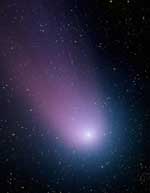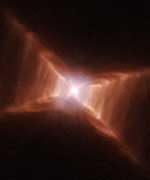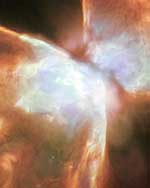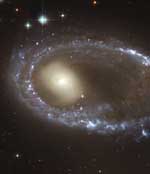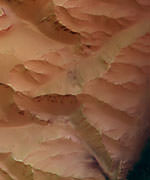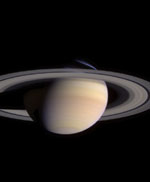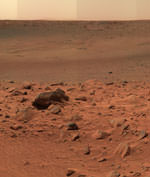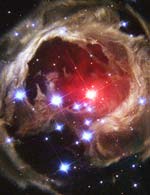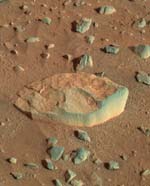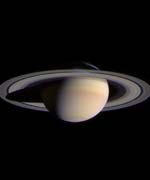
Image credit: NASA/JPL
Four months before its scheduled arrival at Saturn, the Cassini- Huygens spacecraft sent its best color postcard back to Earth of the ringed world. The spacecraft is expected to send weekly postcards, as it gets closer to the ringed giant.
The view from Cassini shows Saturn growing larger and more defined as the spacecraft nears a July 1, 2004, arrival date. On February 9, Cassini’s narrow angle camera, one of two cameras onboard the spacecraft, took a series of exposures through different filters, which were combined to form the color image released today.
“We very much want everyone to enjoy Cassini’s tour of this magnificent planetary system,” said Dr. Carolyn Porco, leader of the Cassini imaging science team at the Space Science Institute in Boulder, Colo. “And I can say right now the views out the window will be stunning.”
Cassini was 69.4 million kilometers (43.2 million miles) from Saturn when the images were taken. The smallest features visible in the image are approximately 540 kilometers (336 miles) across. Finer details in the rings and atmosphere than previously seen are beginning to emerge and will grow in sharpness and clarity over the coming months. The thickness of the middle B ring of Saturn, and the comparative translucence of the outer A ring, when seen against the planet, as well as subtle color differences in the finely-banded Saturn atmosphere, are more apparent.
“I feel like a kid on a road trip at the beginning of our tour,” said Dr. Dennis Matson, project scientist for the Cassini-Huygens mission to Saturn and its largest moon Titan. “We’ve been driving this car for nearly 3.5 billion kilometers (2.2 billion miles) and it’s time to get off and explore this ringed world and its many moons. I can hardly wait, but in the meantime, these weekly color images offer a glimpse of our final destination.”
In the coming months, imaging highlights will include near daily, multi-wavelength imaging of Saturn and its rings; imaging of Titan beginning in April; Titan movie sequences starting in late May, when the resolution exceeds that obtainable from Earth; and a flyby of Saturn’s distant moon, Phoebe, in June, at a spacecraft altitude of 2,000 kilometers (1,243 miles).
Through Cassini, about 260 scientists from 17 countries hope to gain a better understanding of Saturn, its famous rings, its magnetosphere, Titan, and its other icy moons. “Cassini is probably the most ambitious exploration mission ever launched and is the fruit of an active international collaboration,” said Dr. Andre Brahic, imaging team member and professor at Universit? Paris 7-Denis Diderot, France. “It should be the prelude of our future, the exploration of our surroundings by humanity.”
Cassini will begin a four-year prime mission in orbit around Saturn when it arrives July 1. It will release its piggybacked Huygens probe about six months later for descent through Titan’s thick atmosphere. The probe could impact in what may be a liquid methane ocean.
JPL, a division of the California Institute of Technology in Pasadena, manages the mission for NASA’s Office of Space Science, Washington. The Space Science Institute is a non-profit organization of scientists and educators engaged in research in astrophysics, planetary science, Earth sciences, and in integrating research with education and public outreach. Cassini- Huygens is a cooperative mission of NASA, the European Space Agency and the Italian Space Agency.
For the first image and other weekly images on the Internet each Friday, visit:
http://www.nasa.gov/
http://saturn.jpl.nasa.gov
http://ciclops.org/
For information about Cassini-Huygens on the Internet, visit:
http://saturn.jpl.nasa.gov/
Original Source: NASA/JPL News Release
